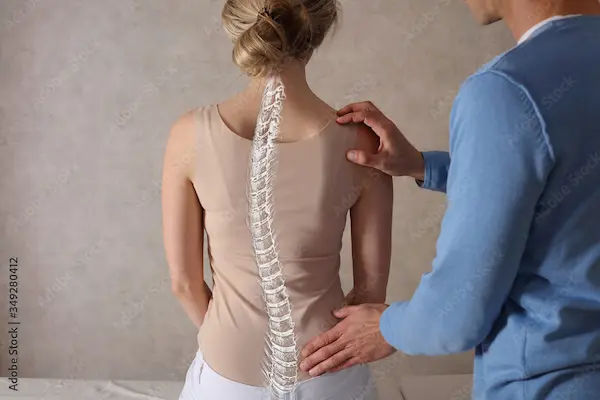Understanding Common Knee Pain Causes
Explore the common causes of knee pain, including injuries, arthritis, and overuse. Learn about symptoms, treatment options, and prevention strategies to maintain healthy knee joints.

Written by
Last updated on 3rd Jul, 2025
Introduction
Knee pain is one of the most common complaints people experience, affecting individuals of all ages and activity levels. Whether you're an athlete, someone who enjoys daily walks, or simply managing the physical demands of daily life, knee pain can disrupt your routine and quality of life. Understanding the common causes of knee pain is essential for effective management and prevention. This article delves into the various reasons behind knee pain, offering insights and actionable advice for patients.
1. Osteoarthritis
Osteoarthritis is one of the most common causes of knee pain, particularly in older adults. It is a degenerative joint disease that occurs when the protective cartilage that cushions the ends of the bones wears down over time. This leads to pain, swelling, and stiffness in the knee joint.
Symptoms:
Pain during or after movement
Stiffness, especially in the morning or after periods of inactivity
Swelling and tenderness around the knee
Reduced flexibility and range of motion
A grating sensation or popping sounds during movement
Management:
Weight Management: Maintaining a healthy weight reduces stress on the knee joints.
Exercise: Low-impact activities like swimming and cycling can strengthen the muscles around the knee.
Medications: Over-the-counter pain relievers and anti-inflammatory drugs can help manage symptoms.
Physical Therapy: A physical therapist can design a tailored exercise program to improve joint function.
2. Rheumatoid Arthritis
Rheumatoid arthritis (RA) is an autoimmune disorder that can affect the knee and lead to inflammation, causing pain, stiffness, and swollen joints. The immune system mistakenly attacks the synovium, the lining of the membranes that surround the joints.
Symptoms:
Warm, swollen, and tender joints
Joint stiffness, especially in the morning or after periods of inactivity
Fatigue, fever, and loss of appetite
Symmetrical joint involvement (affecting both knees)
Management:
Medications: Disease-modifying antirheumatic drugs (DMARDs) and biologics can slow the progression of RA.
Physical Therapy: Exercises to maintain joint flexibility and strength.
Lifestyle Changes: A balanced diet, regular exercise, and stress management can help manage symptoms.
Surgery: In severe cases, joint replacement surgery may be necessary.
3. Ligament Injuries
Ligament injuries, such as tears to the anterior cruciate ligament (ACL) or medial collateral ligament (MCL), are common in athletes and can occur due to sports or accidents. These injuries can cause severe pain, instability, and difficulty in movement.
Symptoms:
A loud pop or snap during the injury
Severe pain and inability to continue activity
Swelling within the first 24 hours
Loss of range of motion
A feeling of instability or "giving way" in the knee
Management:
Rest and Ice: Immediate rest and ice application can reduce swelling and pain.
Compression and Elevation: Using a compression bandage and elevating the leg can help manage swelling.
Physical Therapy: Rehabilitation exercises to restore strength and stability.
Surgery: In cases of severe ligament tears, surgical intervention may be required.
4. Meniscus Tears
The meniscus is a piece of cartilage that acts as a cushion between your thigh bone and shinbone. A tear can result from a sudden twisting movement or impact, leading to pain, swelling, and difficulty moving the knee.
Symptoms:
Pain, especially when twisting or rotating the knee
Swelling and stiffness
A catching or locking sensation in the knee
Difficulty fully straightening the knee
Management:
Rest and Ice: Resting the knee and applying ice can reduce pain and swelling.
Physical Therapy: Exercises to strengthen the muscles around the knee and improve flexibility.
Medications: Over-the-counter pain relievers can help manage symptoms.
Surgery: In severe cases, arthroscopic surgery may be necessary to repair or remove the damaged meniscus.
5. Tendonitis
Tendonitis is the inflammation of the tendons, which can result from overuse or injury. Patellar tendonitis (also known as jumper's knee) and quadriceps tendonitis are common forms that can lead to pain at the front of the knee.
Symptoms:
Pain and tenderness around the affected tendon
Swelling and warmth
Pain that worsens with activity
Stiffness, especially in the morning or after periods of inactivity
Management:
Rest and Ice: Resting the affected tendon and applying ice can reduce inflammation and pain.
Physical Therapy: Stretching and strengthening exercises to improve tendon flexibility and strength.
Medications: Anti-inflammatory drugs can help manage symptoms.
Bracing: Using a knee brace or strap can provide support and reduce strain on the tendon.
6. Bursitis
Bursae are small fluid-filled sacs that cushion the knee joint. Inflammation of these bursae, often due to repetitive kneeling or overuse, can cause pain and swelling around the knee.
Symptoms:
Pain and tenderness around the affected bursae
Swelling and warmth
Pain that worsens with movement or pressure
Limited range of motion
Management:
Rest and Ice: Resting the affected area and applying ice can reduce inflammation and pain.
Medications: Anti-inflammatory drugs can help manage symptoms.
Physical Therapy: Exercises to improve flexibility and strength.
Aspiration: Sometimes, a doctor may drain excess fluid from the bursae.
7. Gout
Gout is a form of arthritis caused by a buildup of uric acid crystals in the joints, leading to severe pain, redness, and swelling in the knee. It often affects the big toe but can also impact other joints, including the knee.
Symptoms:
Intense pain, often starting at night
Redness and warmth around the affected joint
Swelling and tenderness
Limited range of motion
Management:
Medications: Anti-inflammatory drugs, colchicine, and medications to lower uric acid levels can help manage symptoms.
Dietary Changes: Avoiding foods high in purines, such as red meat and seafood, can reduce uric acid levels.
Hydration: Drinking plenty of water can help flush uric acid from the body.
Weight Management: Maintaining a healthy weight can reduce the risk of gout attacks.
8. Infections
Infections in the knee joint, known as septic arthritis, can cause extreme pain, swelling, warmth, and fever. It often requires prompt medical attention and treatment with antibiotics.
Symptoms:
Severe pain and swelling in the knee
Warmth and redness around the joint
Fever and chills
Limited range of motion
Management:
Antibiotics: Prompt treatment with antibiotics is essential to clear the infection.
Drainage: In some cases, a doctor may need to drain the infected fluid from the joint.
Rest and Ice: Resting the affected joint and applying ice can help manage symptoms.
Physical Therapy: Rehabilitation exercises to restore joint function after the infection has cleared.
9. Patellofemoral Pain Syndrome
Often referred to as “runner’s knee,” this condition is characterised by pain around the kneecap. It’s common among athletes and can result from overuse, misalignment, or muscle imbalances.
Symptoms:
Pain around or behind the kneecap
Pain that worsens with activity, especially running, jumping, or climbing stairs
Swelling and tenderness
A grinding or popping sensation during movement
Management:
Rest and Ice: Resting the knee and applying ice can reduce pain and swelling.
Physical Therapy: Exercises to strengthen the muscles around the knee and improve alignment.
Medications: Over-the-counter pain relievers can help manage symptoms.
Bracing: Using a knee brace or taping can provide support and reduce strain on the kneecap.
10. Fractures
A broken bone in the knee, such as a patellar fracture, can result from trauma or accidents. This might lead to severe pain, swelling, and an inability to move the knee.
Symptoms:
Severe pain and swelling
Bruising and tenderness
Inability to move or bear weight on the knee
Deformity or misalignment of the knee
Management:
Immobilisation: Using a cast or brace to keep the knee stable and allow the bone to heal.
Medications: Pain relievers and anti-inflammatory drugs can help manage symptoms.
Physical Therapy: Rehabilitation exercises to restore strength and mobility after the fracture has healed.
Surgery: In severe cases, surgical intervention may be necessary to realign and stabilise the bone.
Conclusion
Knee pain can arise from various causes, each requiring a tailored approach to management and treatment. Understanding the underlying cause of knee pain is crucial for effective treatment and prevention. By maintaining a healthy lifestyle, staying active, and seeking prompt medical attention when needed, individuals can manage knee pain and maintain their quality of life.
Consult Top Orthopaedician
Consult Top Orthopaedician
Dr. Mandar Borde
Orthopaedician
12 Years • MBBS, MS (Orthopedics)
Pune
DR. BORDE CLINIC, Pune
(50+ Patients)

Dr. Aniruddha Deshmukh
Orthopaedician
10 Years • MBBS, Dip (Orthopaedics), DNB (Orthopaedics)
Pune
Dr. Aniruddha's advance ortho and polyclinic, Pune

Dr. Manoj Dinkar
Orthopaedician
15 Years • MBBS, Dip (Orthopaedics)
New Delhi
THE DOCTORS NESST, New Delhi

Dr. Amandeep Singh Narang
Orthopaedician
11 Years • MBBS, DNB
Delhi
APOLLO FAMILY CLINIC, Delhi

Dr. Padam Singh Gautam
General Physician/ Internal Medicine Specialist
43 Years • M.B.B.S (WARDHA M. S.), F.A.G.E. (MANIPAL), F.A.I.M.S. (Pb.), M.A.I.M.S. (Pb.), M.R.S.H. (LONDON)
Noida
Dr Padam Singh Gautam Fracture Clinic, Noida
(50+ Patients)

